(4 minute read)
We have loads of fantastic people here at Teach Your Monster contributing to all our wonderful games. So we thought we better introduce some to you! In this month’s edition, we interviewed Matt Oxborrow, the genius behind all the wacky and wonderful designs in our game Teach Your Monster Number Skills!
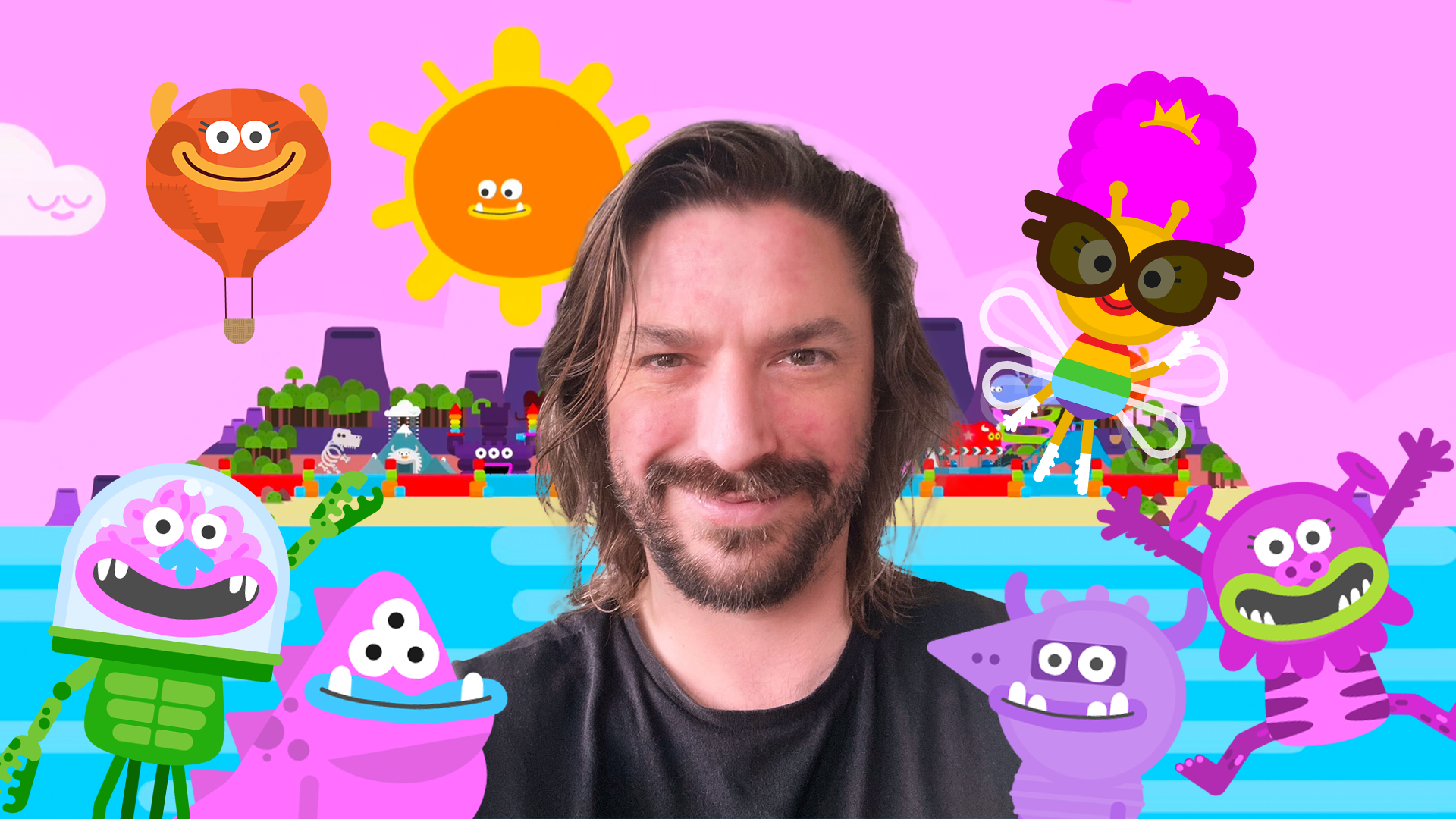
Who are you and what do you do?
My name is Matt… Matt Oxborrow, or just Matt Ox. I’m a freelance illustrator and art director and I’m responsible for all the artwork on Teach Your Monster Number Skills. All the monsters, rides, funny little things with eyes and the little bits of detail on things that no one else really notices.
How did you get started as an illustrator?
I illustrated my first book of animals when I was 5 years old. I started taking it a bit more seriously after school and got a degree in it before starting out working life as an animator. That led me to character design and art direction, then 25 years later to here.
When and how did you get started at Teach Your Monster?
A funny little Non-Player-Character called Darren Garrett got in touch after seeing my work for another highly successful app. I think it was about 4 years ago when we’d all been banished to our homes and not allowed out so a big project like this was just what I needed to stay relatively sane.
How do you develop your ideas? What are your stages?
I like to start by going out and sketching monsters in the wild. They’re actually everywhere if you know where to look. Paredoilia (the phenomenon in which people see faces or other patterns in ambiguous images) definitely helps. The early sketches provide the wild silliness and humour then it’s a case of distilling it down into something that’s still fun but has the articulation and dexterity necessary to do its job on screen. I often rebuild a sketch using geometric shapes and strokes in Illustrator then when the composition is nice, I kind of bash them around and beat them up to make them look a bit more handmade again.
What are important considerations when designing for young children?
They’re very stubborn and very honest critics so you have to revisit a design a few times with fresh eyes to make sure it looks like what it’s supposed to look like. Stylisation can sometimes come and kick you if you’ve drawn a monster that can be interpreted as a cat for example. Kids will never unsee the cat.
Do you use your own kids as part of your process?
Absolutely. My daughter was 2 or 3 when we started Number Skills so is one of our earliest testers and has been my litmus test for whether something is fun or ‘boorwing’. A truly valued critic.
How do you design for games vs regular illustration jobs?
As I mentioned earlier it comes down to articulation. The rigs (the ‘skeleton’ of the characters that control it’s movements) are very rigid so you have to make sure every character has the physical ability to perform it’s job or it’s going to look weird. Imagine a T-Rex trying to stack a pile of crates… Nope.
What do you use for inspiration and research at the start of a process?
It depends on the job but everything starts with an observation or an obscure reference. I look at nature, animals, people and their funny clothes and habits, loads of old cartoons and comic strips. The internet is a treasure trove for character designers. I also find myself looking at my own old work and reminding myself what worked and what didn’t.
What tools do you use?
Pen and paper for initial musings then Adobe Illustrator and Photoshop with my Cintiq Pro (drawing tablet).
Out of all the things you've worked on at Teach Your Monster, what are you most proud of?
I love the player characters and the Monster Dressing up shop. It took so much work to get right but being able to build your character from all those sets of limbs and heads is pure joy.
If there was part of the TYM design process you'd like other clients to follow what would it be?
Creative freedom and belief in my decisions.
Is there anything you wanted to get in the game that didn't make it in?
I really wanted to make the magic mirrors actually reflect your monsters in weird distorted ways. Dawid (one of TYM’s game developers) has an idea of how it might work so maybe one day.
What's your favourite ride or character in Number Skills?
The rollercoaster is my favourite ride. I love its stupid grin and the little train that zooms around the track when you go near it. Brain in a Jar is officially the funniest head in the monster customiser. There’s also a new game and character in the pipes that I really like… (stay tuned for this in an upcoming update)
Has working on Number Skills helped you help your own kids?
Yes, even learning how to pronounce ‘pedagogy’ has been invaluable. It’s a fascinating field to work in.
Has working on Number Skills improved your maths?
Embarrassingly, yes.
----
Check out Matt’s amazing illustrations by playing Number Skills here!
You can take a look at the rest of Matt Oxborrow’s great work on his website.
(3 minute read)

Social stories have many different uses all focused on healthy social development. When used to depict and display challenging emotions, social stories give children the language to identify, speak about and develop emotional self-regulation strategies.
What is emotional regulation?
Also known as emotional self-regulation, this is the ability to manage our emotions.
It includes being able to resist highly emotional reactions, adjusting to changes in expectations, self-soothing strategies and handling frustrations without a tantrum!
Regulating our emotions is a skill, just like learning to read, that can be taught and nurtured, so that children can direct their own behaviour responses as they grow towards goals that will benefit them, in the face of a rather unpredictable world and our feelings about it!
Regulating emotions is a pretty personal journey, as our reactions to certain events may be completely different from one another - one child starting a new school will feel excited, and another might be terrified. Although one feels like a positive emotional response, this might result in the child disrupting the class, being too rambunctious in the playground and ultimately result in a bit of a telling-off. So it’s the self-regulating strategies employed by BOTH children that will help them fit positively in their new environment.
How do we develop it?
Coaching kids through challenging situations with a supportive framework is the key to learning self-regulation skills. Rather than being impulsive and reactive, slowing them down and teaching them how to respond calmly really helps develop these strategies. Clinicians call it “scaffolding” the behaviour you want to encourage until they can handle these situations on their own.
In schools, Social and Emotional Learning (SEL) schemes can help teachers scaffold these self-regulation skills in a more formal and structured way, helping children learn about their feelings, the feelings of others, and how to recognise and manage emotions.
The first two learning steps in SEL are self-awareness - identifying emotions, learning about feelings, and self-management - managing emotions, and coping with feelings.

Social Stories - how do they help teach emotional regulation?
For some children, understanding feelings is particularly challenging as ‘feelings’ aren’t tangible and children often lack the language to articulate them. Adults may be able to model feelings to children but not experience them in the same way, presenting a particularly difficult challenge when teaching self-awareness.
Social stories present information in a literal, 'concrete' way, which may improve the understanding of a previously difficult or ambiguous situation or activity. So social stories can help us present emotions to kids and model the type of language that can be used to describe them.
What forms can these stories take?
Picture Stories can be especially useful for all people, including those with learning difficulties, to model the language used to describe emotions and the associated bodily expressions of emotions.
Here at Teach Your Monster, we have developed social picture stories with our expert, Child Clinical Psychologist Dr Angharad Rudkin! Bongo Blows His Top is the first in a series of beautifully illustrated comic strips addressing emotional regulation. In this story, we see ‘Bongo’ having some difficult feelings in response to environmental stressors and ‘Cuddles’ giving 3 useful strategies to deal with those emotions. Why not download a copy here and read it with the kids? Available in black and white too
If you’re interested to find out more about social stories click here for a helpful article from the National Autistic Society.
----
Kay Leathers
Freelance writer and designer.
(5 minute read)
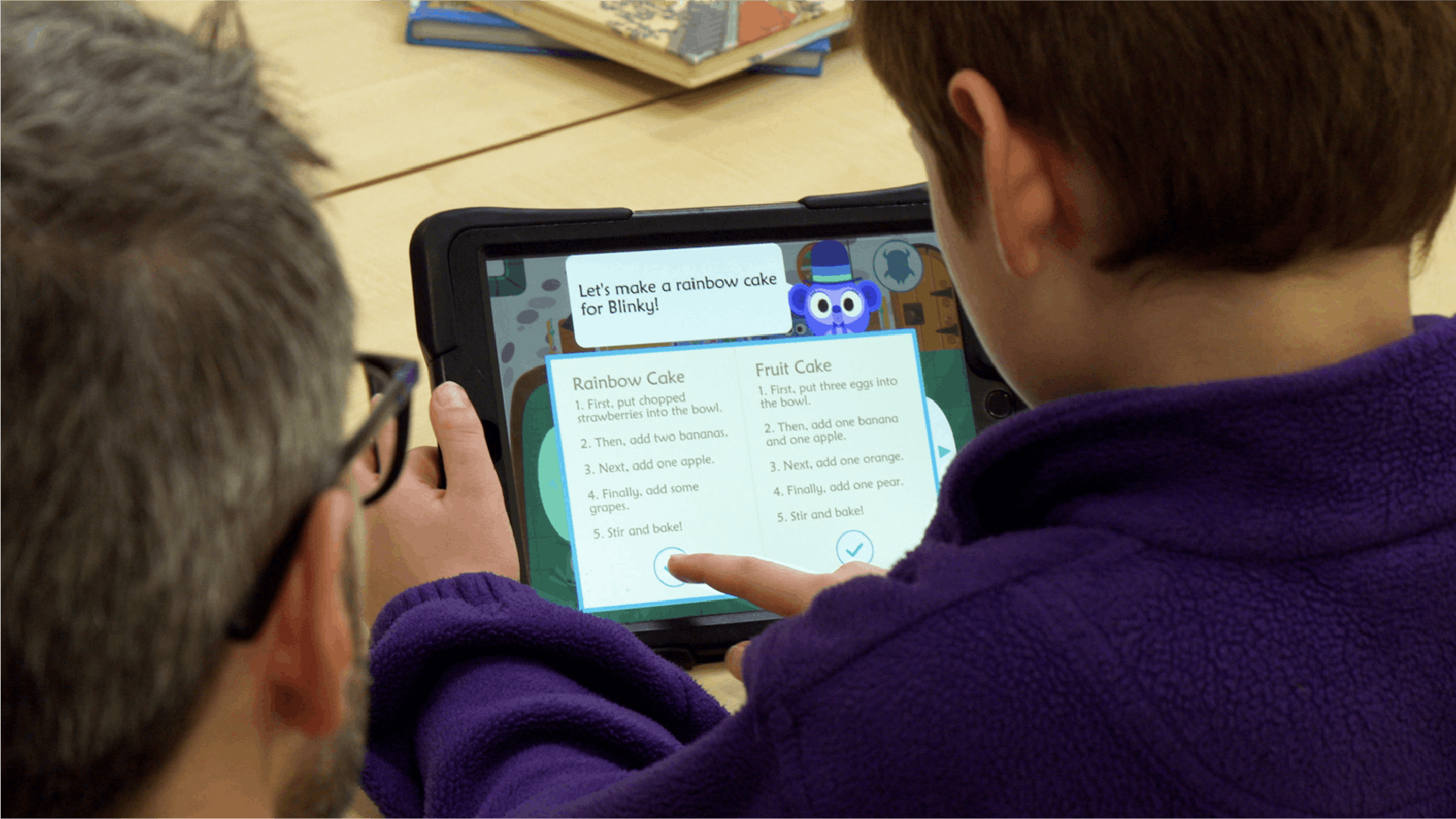
What is the first book you can remember reading because you wanted to? The first one that drew you into a story that you can probably remember into adulthood? Maybe you picked it from the library or in a book shop. Maybe you still have a copy in the house.
Reading for pleasure is choosing to read what you want based on your own interests and preferences, without the pressures of being graded, assessed or marked on ability. Clearly teachers need to assess reading proficiency, but at the same time children can find being assessed quite stressful — potentially that can create some negative connotations when it comes to reading. Therefore it's really important to foster reading time where children aren’t assessed, where they can read what they want and as much as they want.

Angela Colvert, lecturer in English Education at Roehampton University and our Teach Your Monster resident Literacy advisor, describes 4 core principles for developing a joy of reading:
1. Skill and will - The skills for reading are phonics, word decoding etc and the will is the motivation to read. There’s no use in having the skill to read but no will to actually pick one up! So it’s important to develop both in tandem.
2. Achievement - Many studies have shown that if children read for pleasure over time, they will be more successful in their school career and achievement across a broad range of subjects. On a more personal level, more reading helps children to access more texts that they are interested in.
3. Cultural understanding - reading can be a doorway into another life. You live vicariously through stories, develop empathy, different perspectives. Non-fiction develops investigative skills.
4. Identity - the way in which children start to identify themselves as readers and develop preferences, having autonomy and ownership over their reading choices.
After the success of Teach Your Monster to Read - a game where we introduce the skills and building blocks of reading, we wanted to create a game that would encourage the will to read. Together with Angela as the literacy advisor, our team developed the game ‘Teach Your Monster Reading for Fun’. In this game, kids teach their own little monster the joys of reading (while also vicariously learning it themselves) in a range of contexts.
Ensuring the game was underpinned by literacy pedagogy, Angela and the team developed the acronym 'TEACUPS' to inform the design process and ensure that research and pedagogy were embedded throughout the game. This helped to keep the core principles of reading for pleasure in focus. This could draw some parallels with popular teaching or at-home reading for pleasure practises.
T is for…Trying new things
Providing a range of texts is a great way to encourage the development of identity and maintain the will to read. The game provides a range of texts, including magazines, recipes and free e-books, for children to enjoy and encourages them to extend their reading experiences.
The librarian ‘Goldspear’ recommends books similar to the preferences that the child has shown to ensure that a sense of identity is being built, while also recommending new ones that are slightly removed, to extend the kid's knowledge.
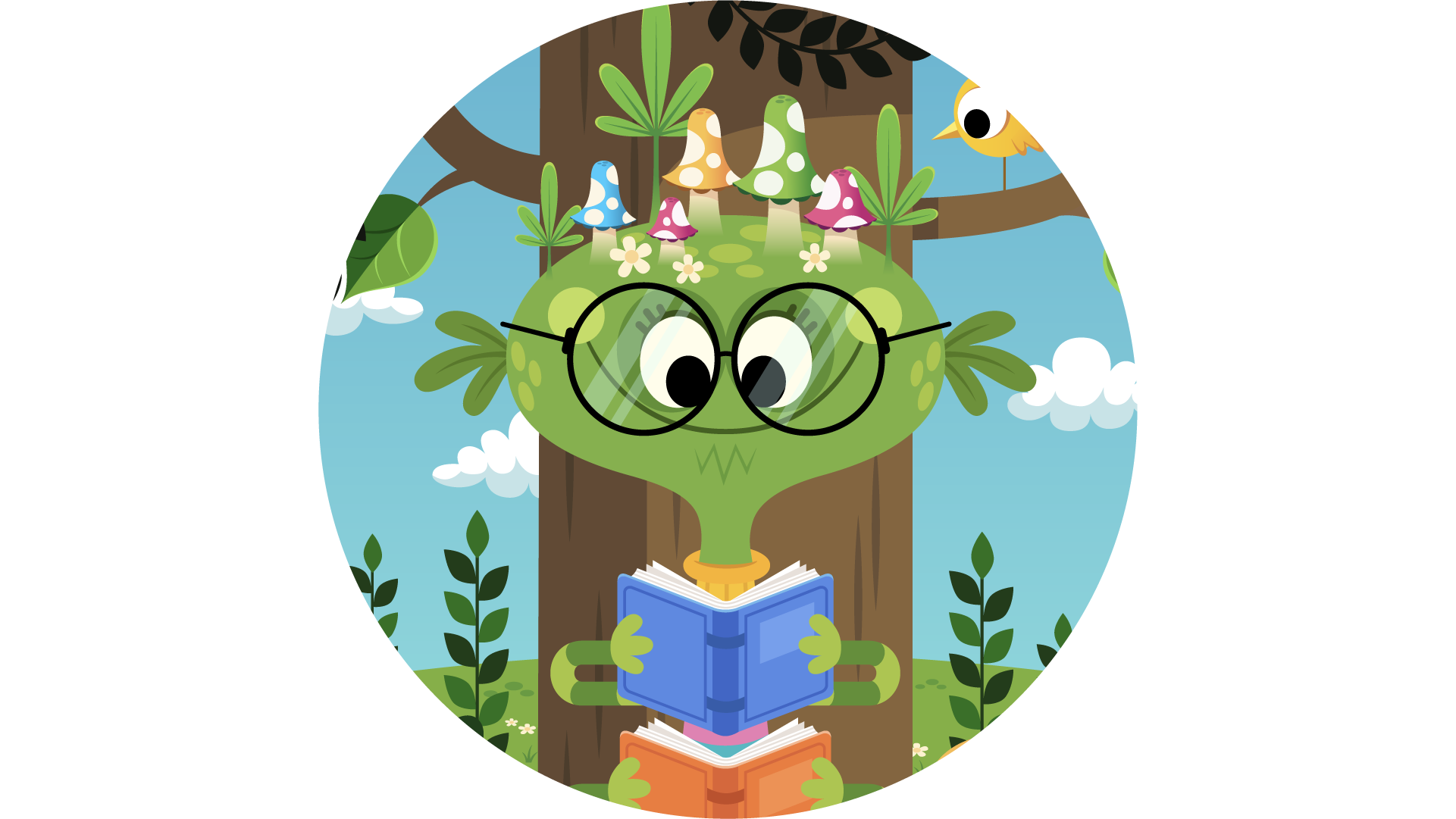
E is for…Enjoyment
One key element of will is enjoyment - after all if you don’t enjoy it, you don’t do it! In the game, there is an extensive map of places and characters to visit all wrapped up in this joyful and humorous world of reading adventures waiting to be explored. Those familiar with our other Teach Your Monster to Read games will recognise the engaging and exciting environment and the fun the children can have reading with their very own monster.
A is for…Achievement
Achievements in reading can affirm a child’s reading identity. Put simply ‘I am being rewarded for reading’ = ‘I enjoy reading’. Completing reading adventures and missions within the game supports the children’s sense of achievement as they engage in reading across a range of authentic contexts. We’ve added badges that the kid can collect by completing certain missions, to help instil this sense of achievement.
C is for… Community
Book talk and building reading communities is one of the pillars for teaching reading for pleasure. When children can talk with adults and their peers passionately about their books, this builds enjoyment and a sense of belonging (identity). When playing the game, the children are part of a community of virtual characters with whom they can read, talk about books and share reading adventures. When looking at how children interact with the game, it was found that they do actually read aloud to the characters in the game, building this love for reading.
U is for… Understanding
Understanding the purpose of reading or ‘why do I read’ can motivate readers. In normal life, lots of reading can be done to fulfil a purpose, for example, reading a recipe to make a meal. When completing missions, children develop an understanding of the purpose of different types of text, for example, when following instructions or using a text to help a villager make a rock bun! And children can be creative around this, building that positive association of reading and enjoyment, rather than simply following an instructional text.
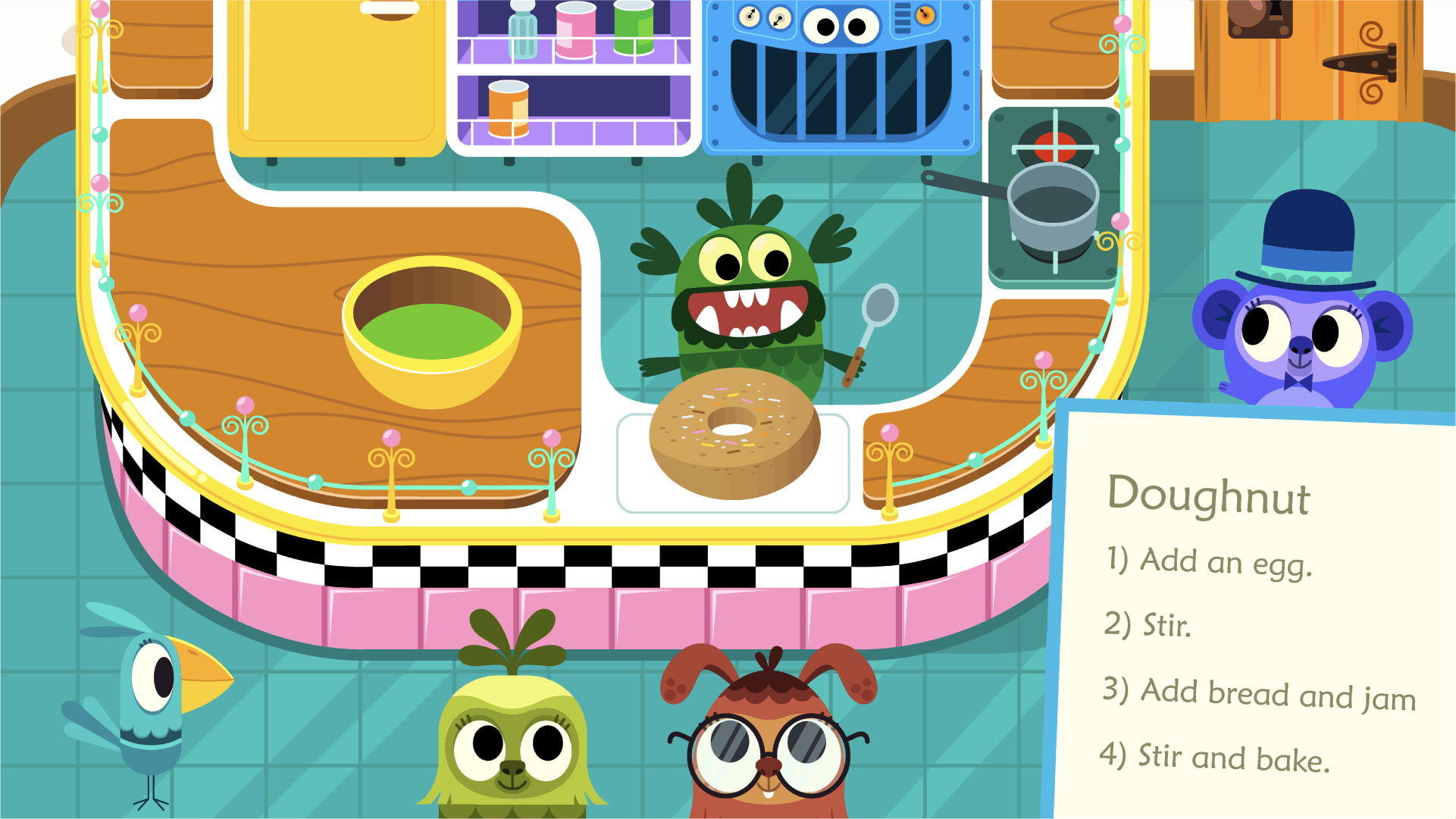
P is for…. Preferences
Crucial to reader identity is the sense that the child can start to have preferences and build a collection of books they enjoy. As the game develops, children will begin to evolve a preference for certain activities and books and can curate their very own collection of favourite texts on their monster’s virtual bookshelf.
S is for… Stamina
Developing a regular reading habit can make a real difference in building that love of reading. The game supports children to develop the habit of regular reading and the option to listen to audio books can support their engagement. Characters encourage you to pick up and read a book from your bookshelf if it’s been a while.
These pillars can be applied outside the game too. Can you think of ways to help children read for fun in the classroom and at home using TEACUPS?

Alex Goss
Teach Your Monster to Read and Reading for Fun Product Manager
Click here if you’d like to see Angela Colvert talking more about this subject.
(3 minute read)
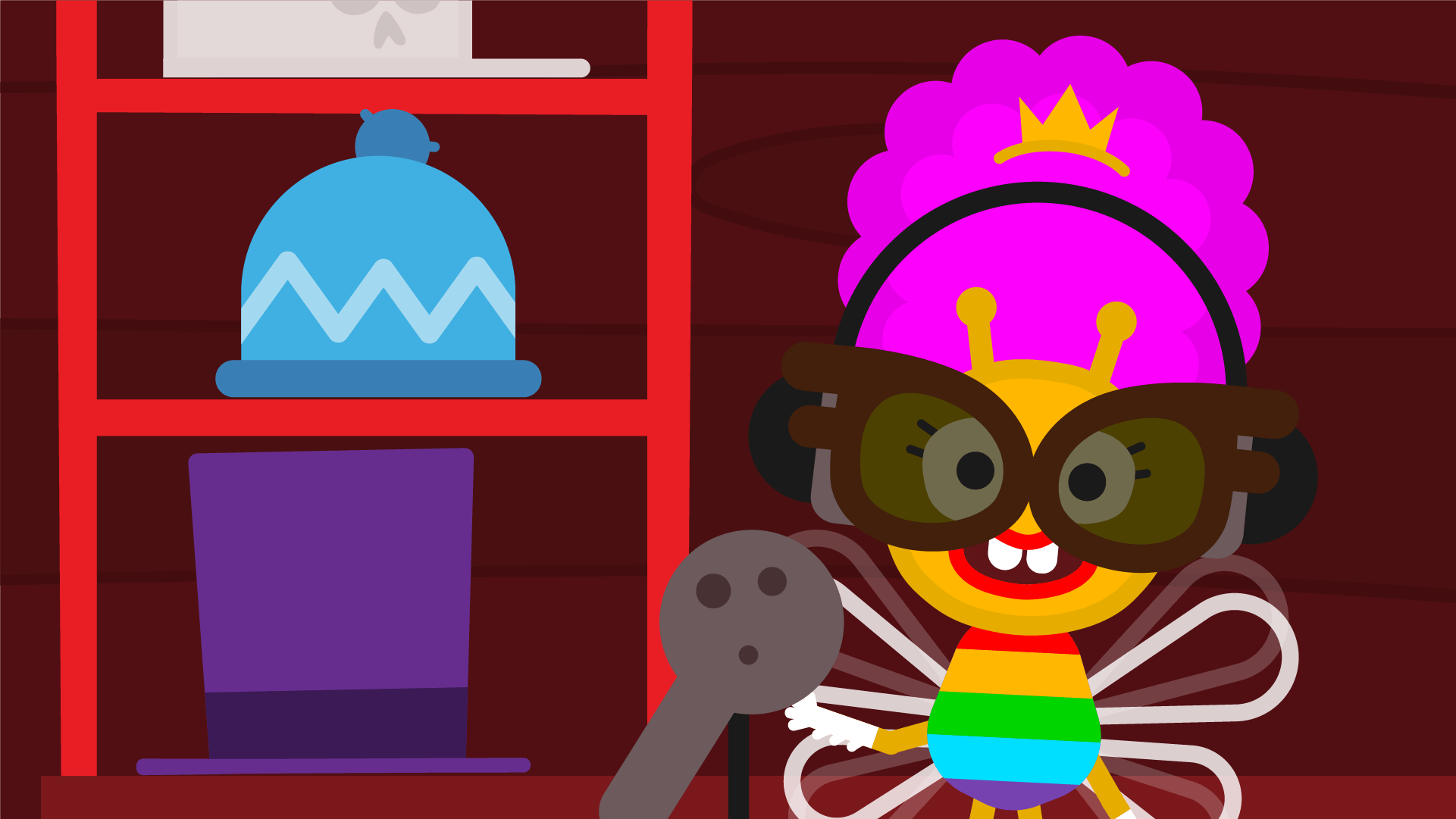
Today we sat down with our very own Queenie Bee from Teach Your Monster Number Skills and asked her some questions about her life. We thought it would be a good opportunity for you and your little ones to learn a bit more about her - why don’t you and your kids read it together? Here is a printable version if you’d like the children to read along with you.
Interviewer: What's your favourite number?
Queenie Bee: My favourite number has to be 4 - I love how 2 and another 2 make four, that’s 2 twos!
Interviewer: How come you own a number park?
Queenie Bee: Ever since I was a tiny bee I’ve loved numbers. I’d spend hours bumbling along counting flowers and pollen all day long. What I ALWAYS wanted to do is celebrate numbers by combining my other passion — theme parks!
I scrimped and saved counting the pennies, plus a generous donation from my Grandmother Queenie Ay (that’s who I inherited my hair from) I managed to buy a run down old theme park.
Of course, back then it was actually an Alphabet park! Letters absolutely everywhere! I thought ‘nine nine no, this has to go!’ I just had to change it because I love numbers soooooo much and I think everyone should love numbers just as much as I do.
Interviewer: How much do you love numbers?
Queenie Bee: Oh well how long have you got for this interview? Ho ho!
Numbers are the best - it is a language everyone can understand, no matter what language you speak. Everyone can learn numbers and they go on and on forever. Not many things can do that you know!
Do you know what - I love numbers so much, I eat number cereal for breakfast, number nuggets for lunch and number salad for dinner! I even dream in numbers!
Interviewer: If you could build anything in your park what would it be?
Queenie Bee: I’d build a huge statue of me!! Although I don’t think Angela the sea monster would be very happy if she saw it…
Interviewer: Who or what's your biggest Maths inspiration?
Queenie Bee: Whoever invented number bonds, they’re so fun aren’t they?
Interviewer: What's the deal with Angela the Sea Monster?
Queenie Bee: Well Angela can get a little peckish and she has a fondness for submarines and boats. As you can imagine this can be troublesome when trying to get monsters to the park. Luckily she also loves our house band and number based songs. If monsters do well practising numbers, the band will play which cheers her up and we can often get her to spit out submarine parts. And other things.
Interviewer: Isn't turtles a weird way to cross a river?
Queenie Bee: Isn’t a bridge a weird way to cross a river?
It gives turtles a job to do, what do turtles do where you come from? Nothing. That’s right. Poor turtles don’t have anything to do! Terrible shame, I say. They make an excellent bridge.
Interviewer: Where do you get those outfits from?
Queenie Bee: Well Moo (my cow friend) is actually an excellent tailor and makes them for me - as you can see they are skin tight and in my favourite colour - rainbow!
Interviewer: Where do numsters come from?
Queenie Bee: Well numsters are an unusual species of monster that come from the top of Mount Numbaro, a mountain just north of Number Park. Once a year, I have to hike up there with a huge sack and get them all from a cave at the summit. This is very hard because as you know, they like to stick in groups mostly - the orange ones love being in tens! Makes them very hard to shove in the sack… anyway they love Number Park because they get to go on the slides and the rollercoaster all day…
Well there you have it, straight from the Queen’s mouth! Stay tuned for more interviews with our other Teach Your Monster Monsters coming soon…
(3 minute read)
World Book Day is a fabulous day for inspiring a passion for all things reading and books! Of course, here at Teach Your Monster, we’re very passionate about reading, from Teach Your Monster to Read - our game which teaches the building blocks of reading - phonics, all the way through to Teach Your Monster Reading For Fun - our ‘reading for pleasure’ game. We thought World Book Day would be a great opportunity to tell you all about the books in Teach Your Monster Reading For Fun, why we choose them and why we love them so much!
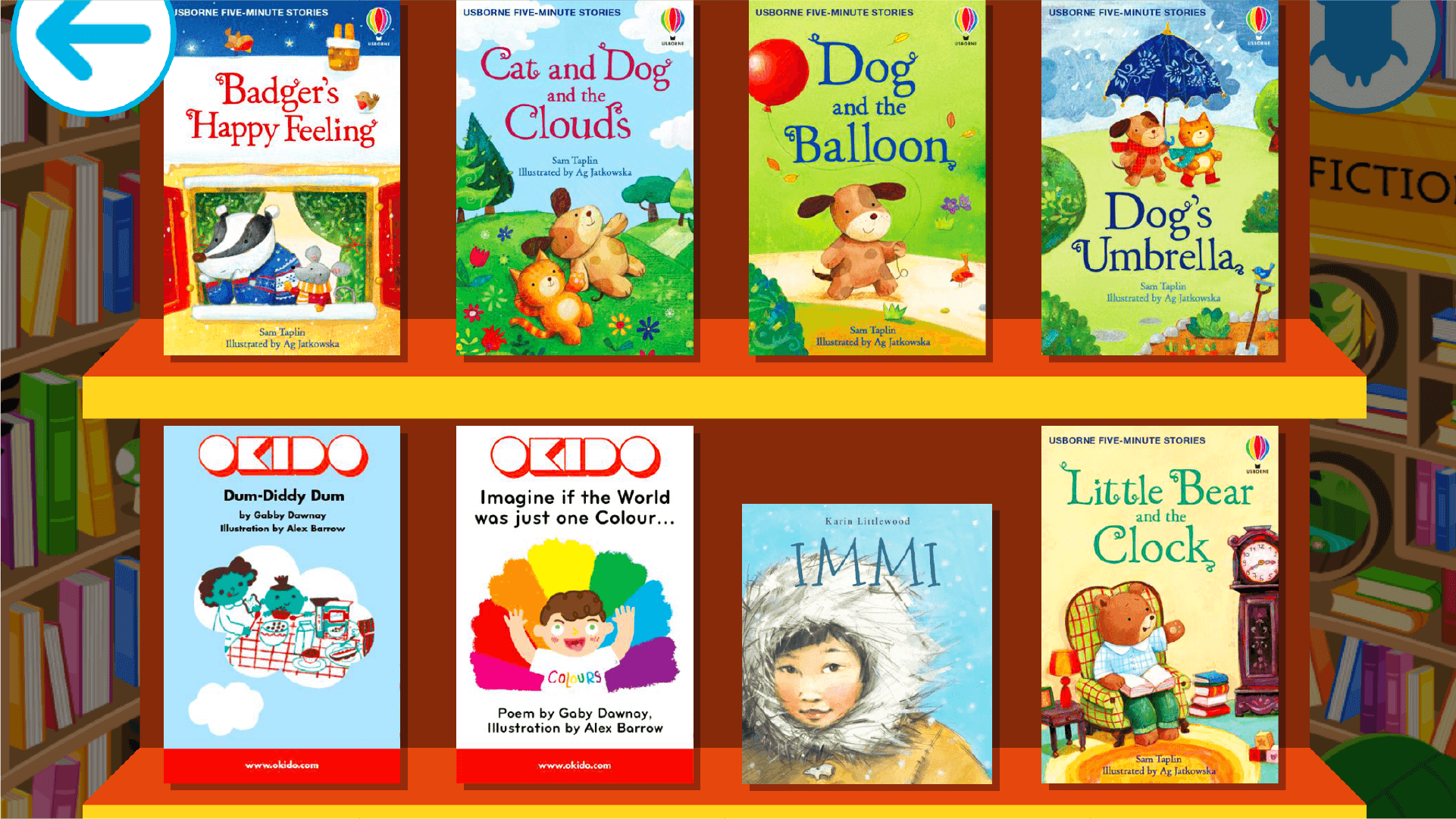
Reading for Fun has a library of over 70 books. Al, our Product Manager for Reading for Fun says that the books in the game are a fantastic way to introduce kids to a variety of texts, in a casual, fun way.
"I’ll avoid being self-indulgent and suggesting you read my very own Teach Your Monster: Football Quiz book, as football and quizzes may not even be your thing! Besides, there are plenty of other top reads in a wonderful collection of free books!"

Here’s Al’s top 5 Reading for Fun books:
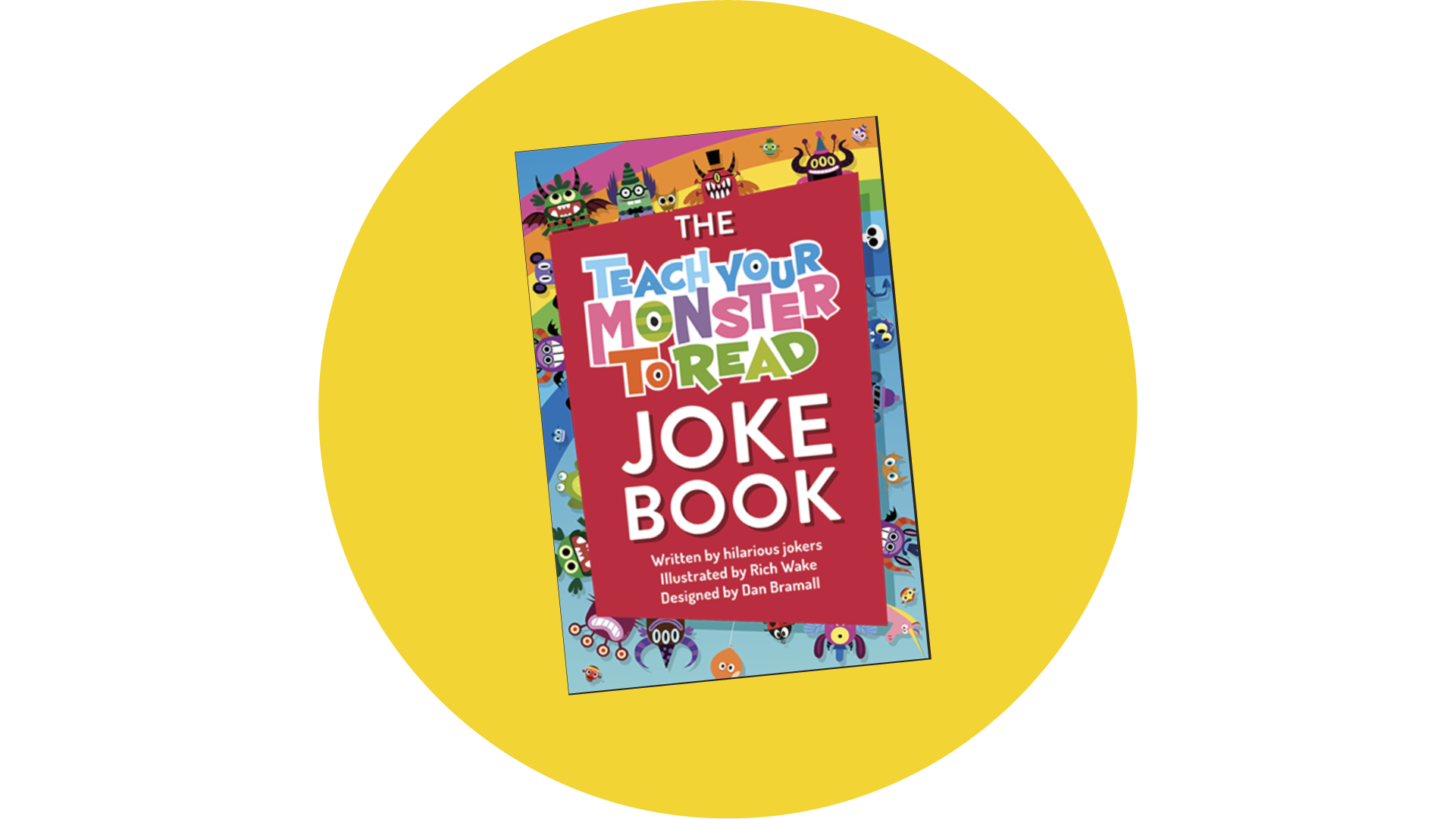
Book 1: Teach Your Monster Joke Book
What is it about? I was trying to think of something witty to say here, but nothing can top the wise little gags in this corker of a book.
Who wrote it? A bunch of hilarious jokers. And it was illustrated by the very talented Rich Wake!
Who would like it? Anyone with a sense of humour?!
Why would you want to read it? Sometimes it’s nice to just pick up a book and have a flick through. It’s great for one-liners that you keep in your back-pocket for unsuspecting friends!

Book 2: Roger Stevens’ Monster Poems
What is it about? Roger has given us some amazing poems in this gem.
Who wrote it? Roger Stevens
Who would like it? Anyone who likes rhyme, monsters, or plays Reading for Fun!
Why would you want to read it? You’ll definitely want to read this as you play the Reading for Fun game. The poems are woven in with the game world - which brings everything to life!
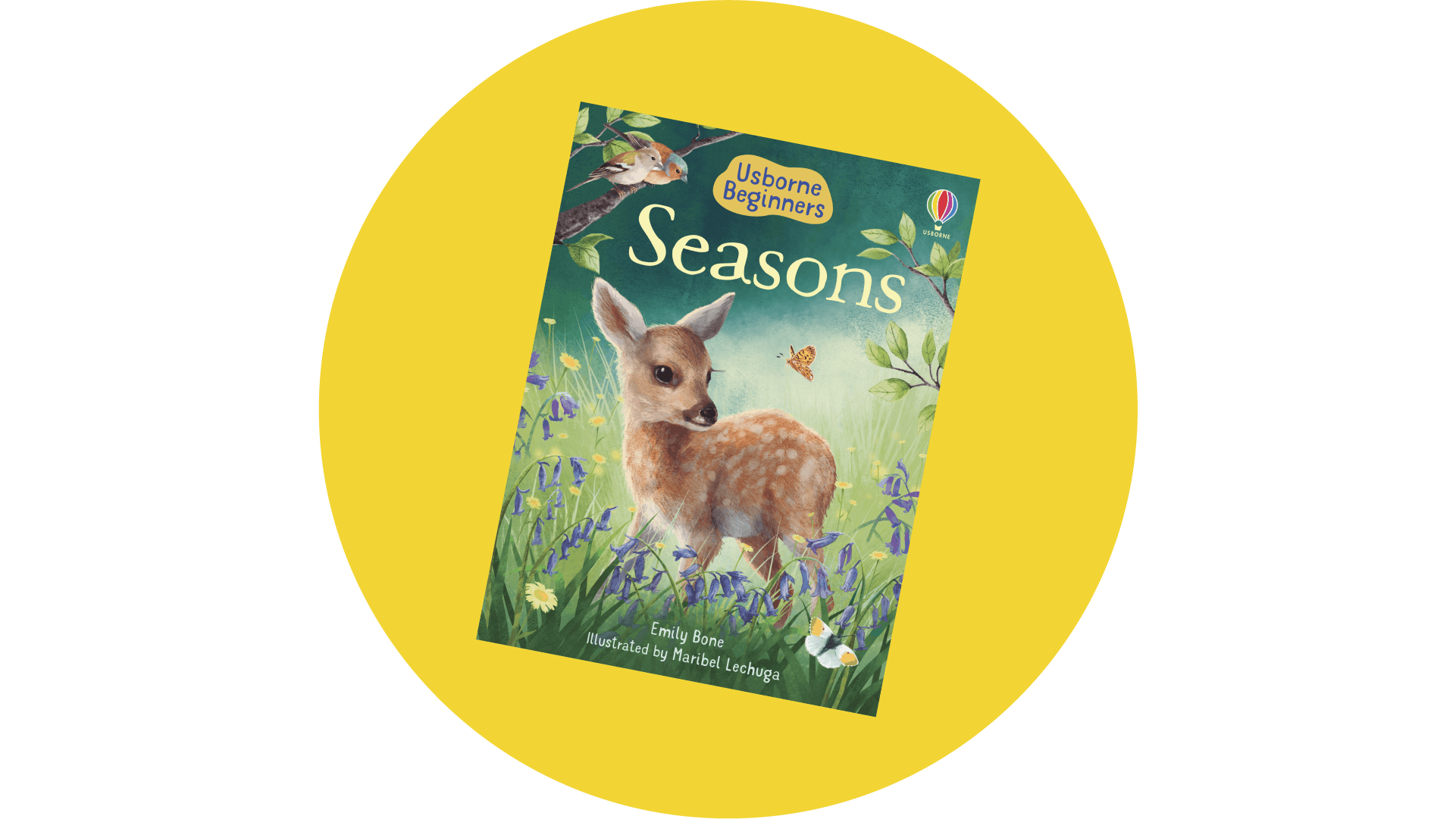
Book 3: Seasons
What is it about? It’s a look through the changing seasons. Sit back and read about baby animals, snowy winters and the changing wildlife.
Who wrote it? Emily Bone
Who would like it? Anyone who wants to learn more about the seasons.
Why would you want to read it? To have a mindful moment with nature.

Book 4: Astro Girl
What is it about? It’s about a girl, Astrid, who plays with her dad at home, thinking about all the adventures she can have in space! No spoilers, but it has a great ending with Astrid’s mum.
Who wrote it? Ken Wilson-Max
Who would like it? Anyone who loves space!
Why would you want to read it? This book is a great family read! A playful bedtime story with lots of positive messages.

Book 5: Immi
What is it about? It’s about a young girl called Immi who discovers beautiful new things to decorate her igloo with.
Who wrote it? Karin Littlewood
Who would like it? Anyone who wants to get lost in another world for a moment.
Why would you want to read it? To snuggle up with a story about being creative, using your imagination and making meaningful connections
------

Alex Goss
Teach Your Monster to Read and Reading for Fun Product Manager
(4 minute read)
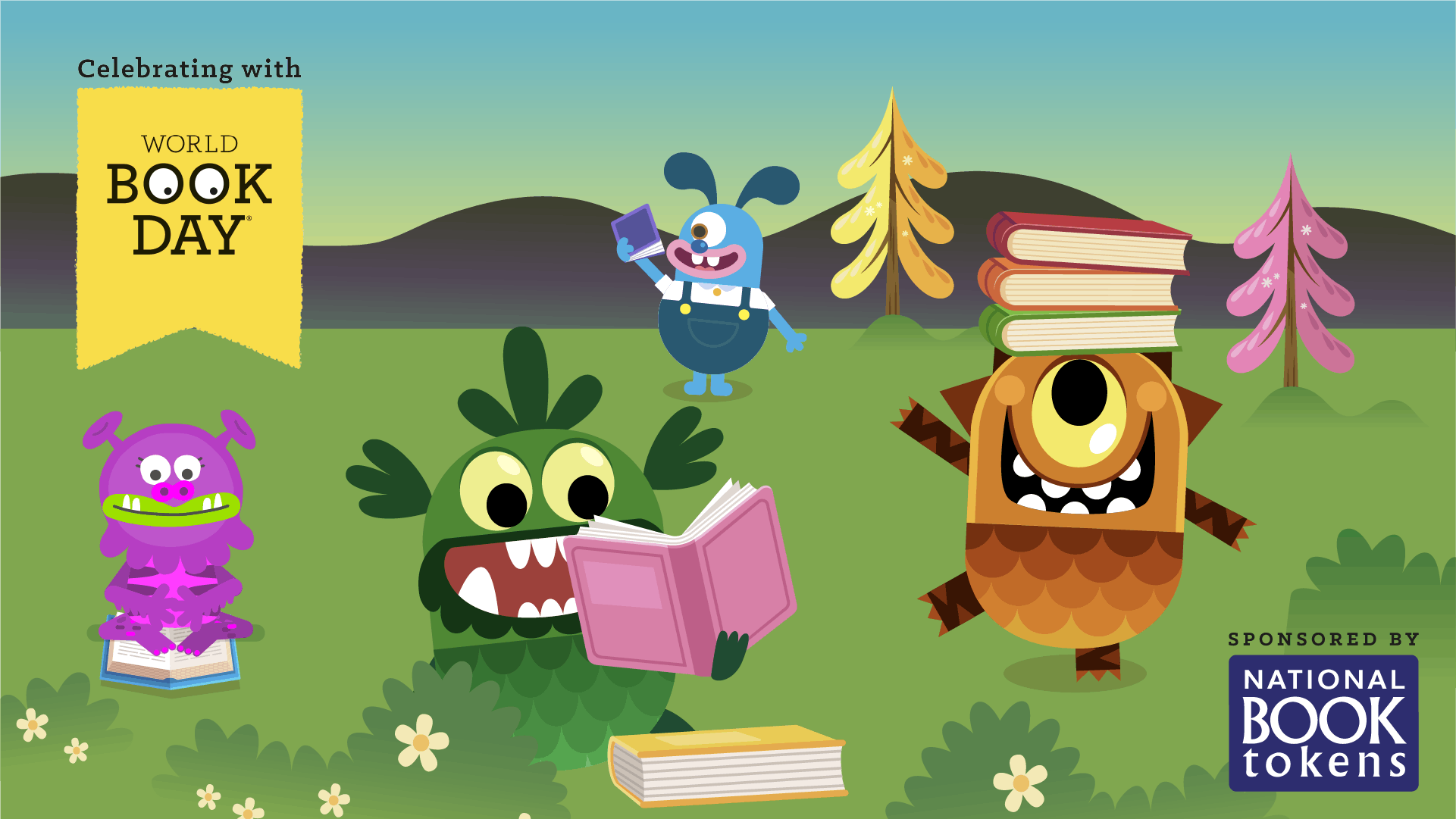
World Book Day is a charity whose mission is to encourage all children to love reading for pleasure. An annual celebration of authors, illustrators, books and the joy of reading, this year's World Book Day will be taking place on Thursday 7 March 2024. But is it just a chance for many kids to go to school dressed up as Spiderman? Does World Book Day really have an impact on reading? These are the important questions!
As an ex-Primary school teacher, I remember World Book Day fondly and how excited the kids got at being dressed up and having the tokens ready to spend at the pop-up book store in the downstairs hall! I think it provides a strong way to embed a love of reading at an early age, and provides an excellent opportunity for teachers to really hound the point about reading for pleasure and autonomy when it comes to book choice - something that I never quite got in my own learning back in the 80s/90s! I love books now of course, and reading to the little ones was always a great joy in being a teacher.
More studiously however, The Literacy Trust did a comprehensive report on the impact of World Book Day, which found that it helps children in two ways: aiding all children to become book owners, many for the first time, and by supporting a variety of activities and experiences essential for building life-long readers.
----
With all the book tokens given out on the day, children can get their £1 World Book Day book for free with their token, so it really can help ALL children get access to physical books. We asked our team which books they would love to give away this World Book Day:
TYM team Book recommendations:
“I'd go for a picture book The Stinky Cheese Man and Other Fairly Stupid Tales by Jon Scieszka and Lane Smith. It's all the tales you know but with a very silly twist and all the tales come crashing together in one chaotic conclusion. Great illustrations and design too. See also The True Story of the Three Little Pigs by the same author.” Darren, Creative Director.
“Mr Gum books are the best books” Matt, Game Developer.
“What do people do all day by Richard Scarry.” Leo, Number Skills Product Manager
“Don’t worry little Crab and the other books in the series by Chris Haughton.” Mor, UX Lead
Remember that there are over 70 books in our reading app Teach Your Monster Reading for Fun too!
-----
On World Book Day, teachers can look to the World Book day website for fun ideas and activities, or use the day to celebrate a book they’ve already been reading in class. They may also dress up as a book character themselves - bringing great joy and a giggle to their pupils! To the parents out there, we know that it can be tricky to put together a decent outfit for World Book Day so here are some of our team’s Top Tips!
Kid’s dressing up - our TYM top tips
“Hang on to everything you have in a dressing up box. You'll be surprised what you can pull together in an emergency with a flat cap and fake beard.” Darren, Creative Director.
“I remember dressing up as the Snow Queen for world book day many moons ago. My Mum made me this amazing spangly cape with fake icicles and we made a tin foil spiky crown. Great book that!” Alice, Designer.
“Anything can be made with a big enough cereal box - why not cut a head hole in one side and paint the box to look like a book? Then you can put any title on there, with a few simple touches and recycle it year on year (with a different name)” Kay, Freelance Designer.
We have also made these Teach Your Monster to Read printable masks and Reading for Fun printable masks as a free download!
We really hope you have an amazing World Book Day this March 7th and we hope to see some little monsters popping up in your local school!
Kay Leathers,
Ex-Primary Teacher and Freelancer
(3 minute read)

The first holidays of the year can seem like a long time coming after a long dark January… But it can be the perfect time to start a growth spurt for you and your little ones - not in height but in seedlings! With loads of benefits to growing your own veg, we explore some quick and easy crops to grow with your little ones this spring break.
Now is a great time of year to start growing crops, ready to harvest throughout the summer. Providing a much needed connection to nature, bringing your little ones in on the job can provide many benefits: fresh food, help with cooking, the joys of seeing something you have cared for grow and flourish - not to mention that tomatoes from the vine are SO much tastier than the ones from the super market - and are super easy to grow!
I recommend starting with one easy veg if you’re a complete beginner when it comes to gardening and there are plenty of videos online to help guide you if you get stuck. I have selected a few of my favourites to talk about here.
Buy seeds that you can plant together so that your kid can witness the full lifecycle of a plant - a great teaching point that will help them out in school too! Courgettes are super fast to grow from seed - just six weeks and you can potentially have your first crop. Get your child to simply drop the seeds into seed tray to start them off indoors early, then show them how to choose the strong ones to transplant into bigger pots (compost the weaker ones). You’ll need to wait until warmer weather to plant them out in the garden, but then just feed them weekly for a good crop. If you don;t have a garden, you can plant them in a large pot at least 45 cm high and 45 cm wide. Your child can start to harvest them when the courgettes are 10cm long - a good chance to practise their mathematical measuring skills too!
Salad leaves are extremely easy to grow from seed, with rocket having large enough seeds for small hands to manage. They can be grown in a window box, meaning you only need a windowsill to start the process. Salad is especially rewarding as it will keep cropping for weeks, especially if you stagger the planting, allowing plenty of healthy dinners while you have a supply! You’ll need to harvest those leaves with scissors though, so adult-assistance may be required for this job.
With tomatoes, you can actually scoop out the seeds from an existing tomato, but you’ll need to harvest and dry them in advance. Growing them from seed requires a bit more work, planting in seed pots to start them off indoors, then planting out once they have established themselves. Much easier to buy tomato plants that have gone through the difficult seedling part and have been given a good start in life. Encourage your child to water and feed them with tomato food throughout the summer, and pick the fresh sweet red beauties as they fruit.
See this article for more details on how to grow easy crops.
If you’re already playing Teach Your Monster Adventurous Eating, your child may have some idea of the growth cycle of a plant from the garden in the game. Of course, we had to speed up the process in the game so they’d probably have a wildly unrealistic idea of how quick this process is! Planting veg with your kid is a great teaching point for them, to see this in real-time from seed to plate and literally eat the fruits of their labour!
Kay Leathers
Freelance writer and designer.
(4 minute read)
Did you grow up in the eighties and nineties? Have you been helping out with your child's homework? Does the modern math that children learn seem potentially bewildering? We have some answers.
Despite its name, New Math isn’t a new concept. Originating in the 1950s and 1960s, New Mathematics was a fresh approach to mathematics teaching, widely adopted by educators in the US and some parts of Western Europe. The main aim of New Math was to revamp the U.S. mathematics curriculum in response to the demands of the space race, technological advancements, and the pressures of the Cold War.
Instead of adopting a ‘learning by rote’ approach to simply teaching children formulas and rules they should rigidly follow, New Math was designed to equip learners with problem-solving skills and an ability to apply mathematical concepts to real-world problems. Today New Math simply means updating learning practices to equip students with the skills to not only find the right answers to mathematical problems, but also understand how and why they were able to solve the problems.

Why Parents Are Struggling With New Math
The way mathematics is taught has constantly evolved especially since the early reforms of the mid-20th Century. For parents, especially those born in the 80s and 90s, there are significant differences to how they were taught.
Instead of just learning how to do something, like multiply or divide, students are encouraged to understand why these operations work the way they do. This might involve more discussion about the principles behind mathematical operations, rather than just memorizing times tables or formulas.
New Math places a greater emphasis on problem-solving skills — students are encouraged to think critically about how to approach a problem, consider different methods, and understand that there might be multiple ways to find a solution. This sits in stark contrast to the ways many of today's parents were taught where there was one way only to find the right answer. But it's important to understand that this new approach isn't just about getting the right answer — it's about understanding mathematical concepts behind getting an answer and being able to apply them in different contexts.
The Downsides To New Math
While there are obvious pros to learning critical thinking and problem-solving skills, there are some cons.
Radical changes in learning have created a divide between children and parents who are struggling to support their children with homework. During the global pandemic, where many parents suddenly become home educators, the gap between methods taught 30-40 years ago and those taught today became glaringly obvious.
Another key issue is that New Math uses word-based problems to expand on mathematical concepts. Word problems require a certain level of reading comprehension, where students must be able to read, understand, and interpret the text of the problem before they can begin to solve the mathematical nature of the question. For students with reading difficulties, this can be a significant barrier to math learning.

How Parents Can Embrace New Math
Incorporating New Math methods into daily life in a playful way is actually quite easy. It can be a great way for parents to reinforce what their children are learning in school, and also begin to grasp the concept themselves.
- Shopping trips are a perfect opportunity to practice math skills. Ask your child to help you calculate the total cost of items, figure out unit prices, or determine how much change you should receive when paying with cash. These simple real-world sums make use of addition, subtraction, and multiplication, not to mention working out percentages when calculating discounts.
- Cooking at home is another great way to apply math to real life. Recipes are excellent for practising measurements and fractions. Have your child help you measure ingredients ask them to do conversions, or to double or half quantities in recipes.
- Props such as buttons, coins or Lego can help children (and parents) visualise problems and solutions. If your child is learning number bonds, picking out seven pieces of Lego and splitting them into two and five, and then three and four, can help both you and your child familiarise yourselves with the concept and then understand how it works.
While you’re doing this don’t forget to encourage your child to explain their thinking as they solve a problem - it all helps develop their ability to articulate mathematical concepts. You’ll not only help your child see the relevance and application of what they are learning but also potentially reduce anxiety by making math a normal, routine part of life.
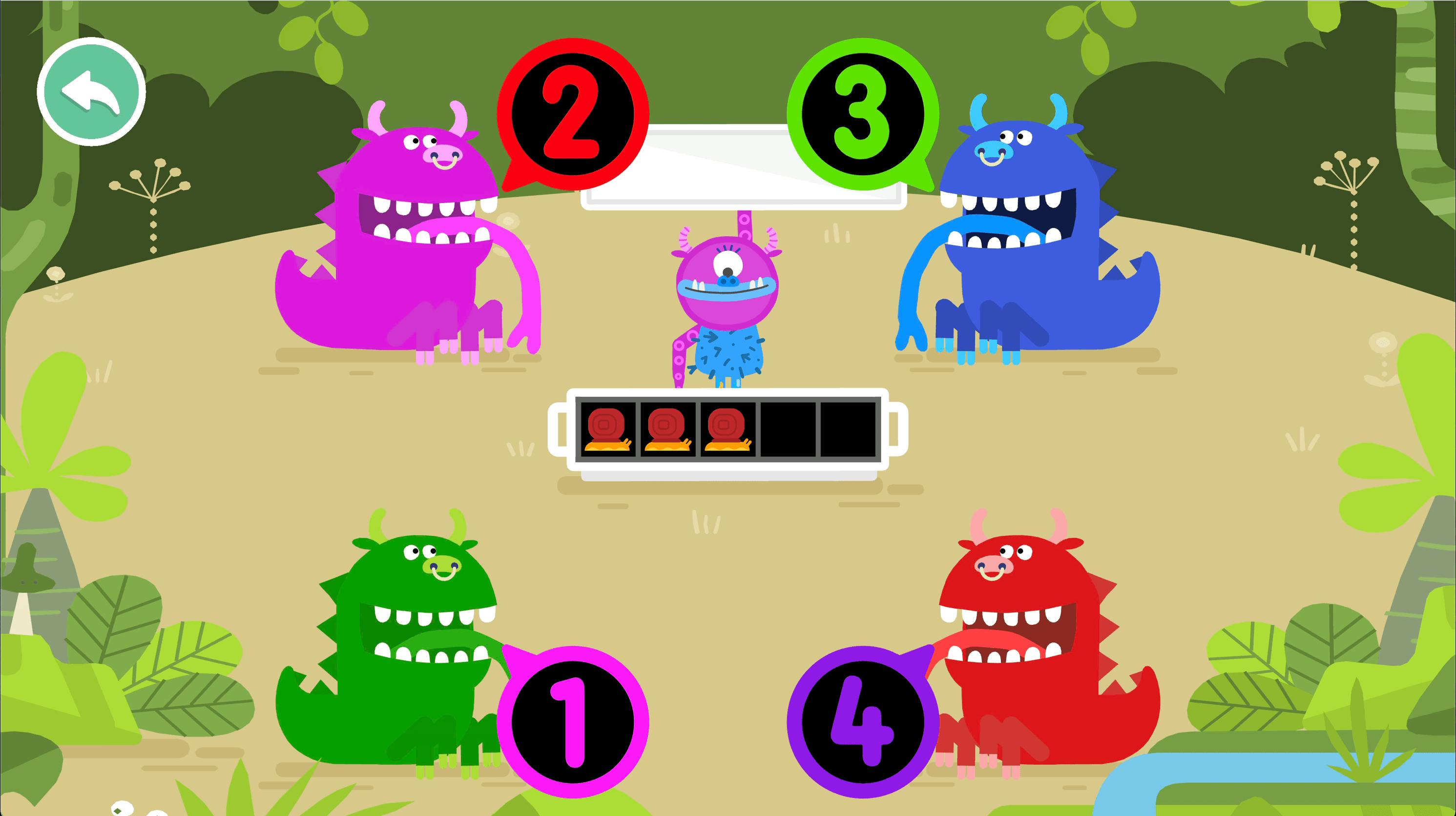
How Teach Your Monster Number Skills Helps With New Math
Games such as Teach Your Monster Number Skills are designed using the same principles of modern Math teaching and are a great way to help both you and your child understand mathematical concepts:
- Helps children practice important mathematical skills and concepts such as number bonds and subitizing using visual manipulatives
- Uses graphics, animation and voice-over to overcome challenges faced by learners who struggle with reading comprehension
- Reduces ‘math anxiety’ through encouraging language which reinforces positive learning techniques
- Helps children and parents learn concepts together, making homework and later learning easier to understand
- Consolidates and compounds school learning through repetition at home
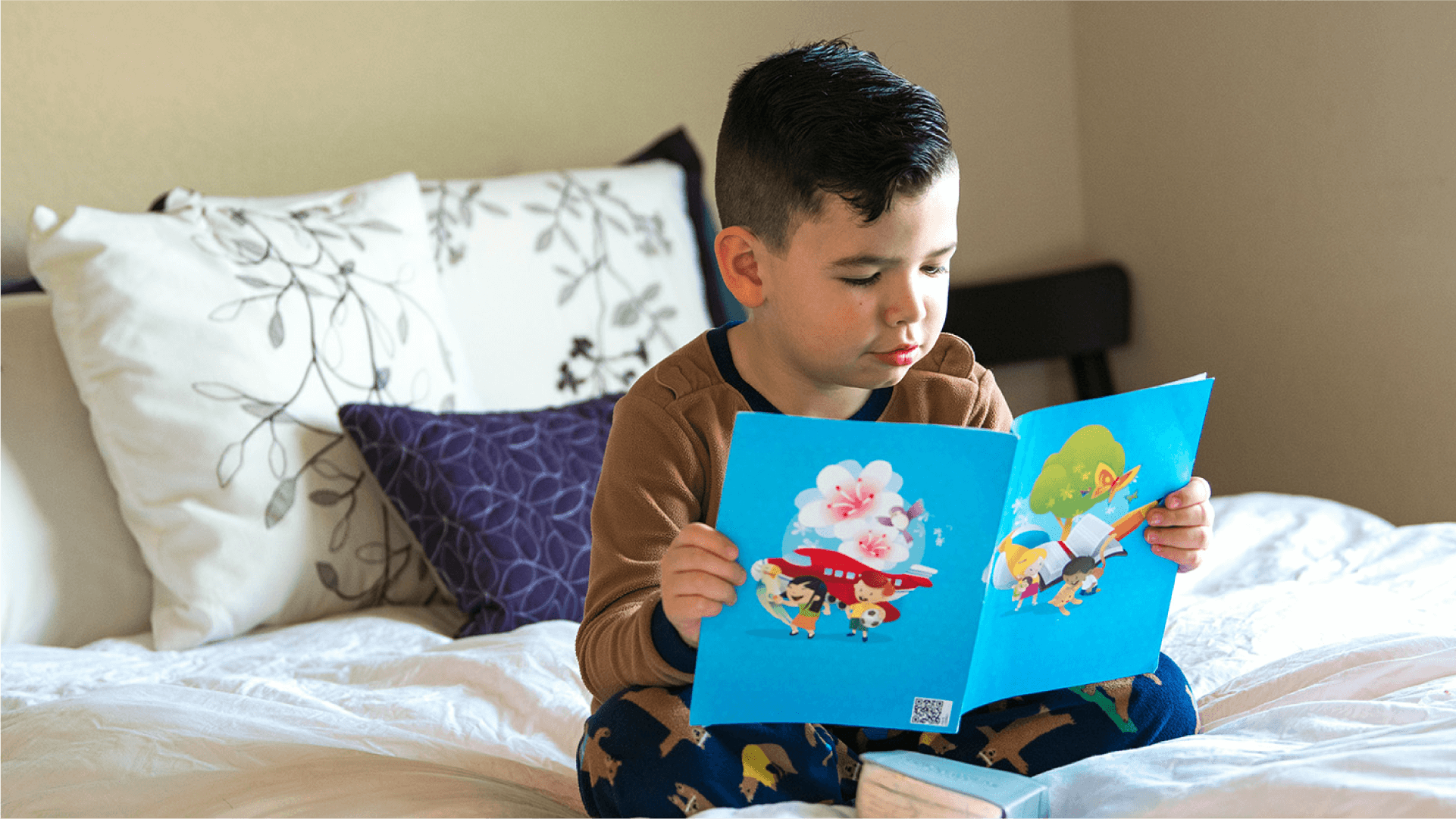
Guiding a child through their early educational needs can be a fun filled adventure, especially when fostering a love for reading. For parents and educators, understanding the role of reading for pleasure in 3 to 6 years olds is crucial. We explore the benefits, offer practical parenting tips, and introduce tools and games from Teach Your Monster (and others) that can significantly enhance the reading experience for kids.
The Magic of Reading for Pleasure
Let’s start with a question — why does early years reading actually matter? Well it’s not just about decoding words on a page, it's about opening doors to new worlds, sparking imagination, and building essential social skills. It's a vital component of literacy development, enhancing vocabulary, comprehension, and communication skills.
Boosting Confidence Through Literacy
Recognising letters, understanding phonics, and starting to read small words are significant early milestones for kids aged 3 to 6 years. Books and educational apps especially designed for early readers, like Teach Your Monster to Read or Reading for Fun, make learning these skills fun, immersive and interactive.
Building a child's confidence is an important stepping stone to building more advanced literacy skills. The more children engage with books (or reading in general!), the more their reading confidence grows. They start to recognise words, get their imagination going, start predicting where the story might go, and make lasting connections with characters they encounter.
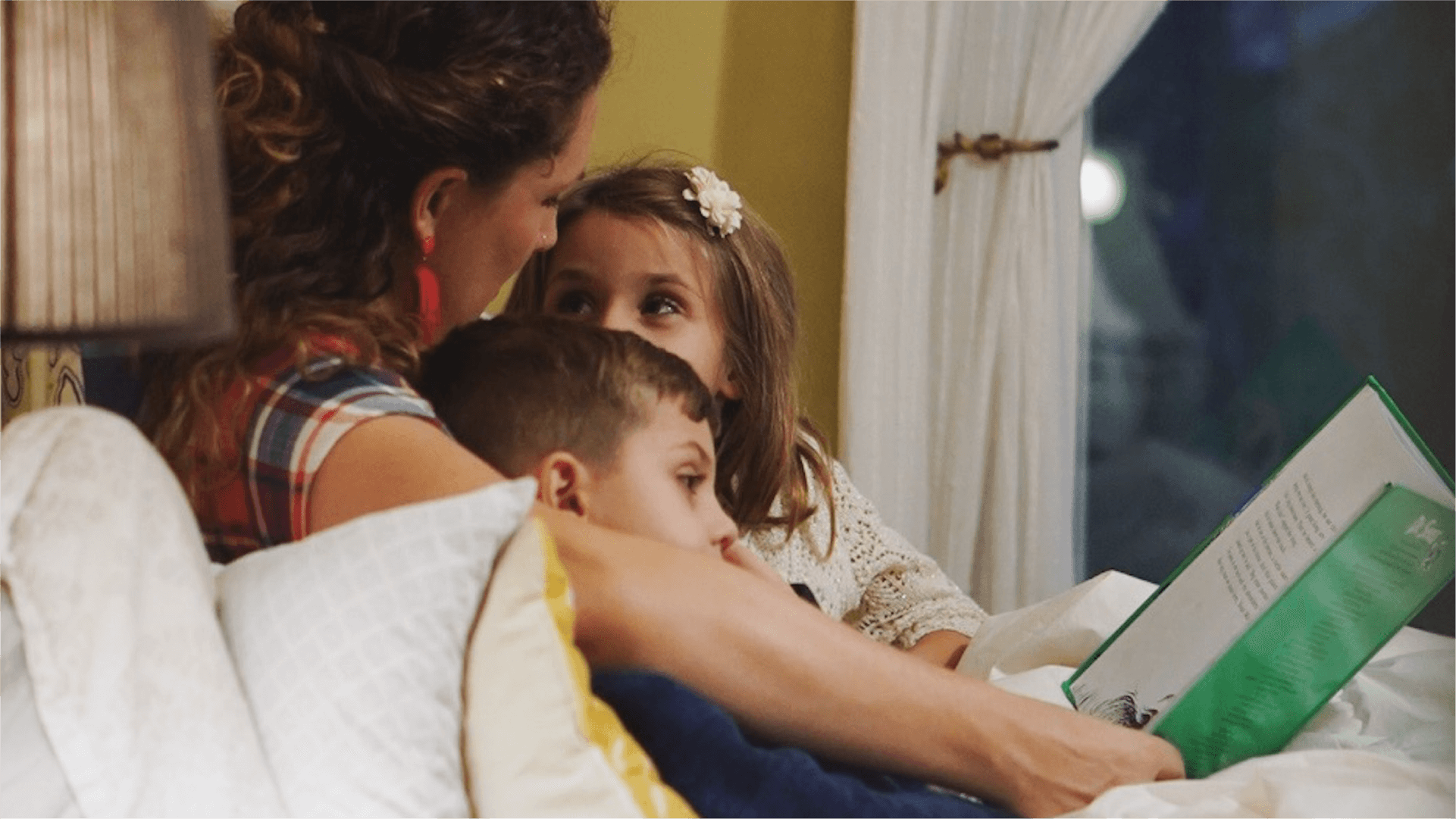
Parenting Tips: Fostering a Reading Habit
- Storytelling Time: Make reading a daily ritual! Whether it's a bedtime story or a mid-day reading break, consistent exposure to books is key. The parents at Teach Your Monster love a reverse bedtime story, where their kid reads the bedtime story to them - why not try this at home?
- Interactive Reading: Use books and apps that are interactive and age-appropriate. Unsurprisingly we recommend Teach Your Monster Reading for Fun as an excellent example of an app that combines learning with play!
- Choose Engaging Books: Select books with rich vibrant illustrations and engrossing stories that play into your child's interests.
- Read Aloud: Reading aloud helps children understand the rhythm and melody of language, making any reading experience more enjoyable.
The Role of Educational Apps
Educational apps for kids can now play a significant role in literacy development. Apps like Teach Your Monster to Read take learning phonics and reading skills and turn them into an exciting rewarding adventure. They can offer a more personalised learning experience, making them a valuable tool for parents and educators alike.
One of our favourite UK teachers, Adam (Abbott Alphege Academy, 2023) says “Teach Your Monster Reading for Fun is absolutely fantastic in ensuring that children maintain a passion for reading and they are exposed to a wide range of texts. It’s engaging, it’s fun and it crosses the world of technology with the world of books and today, that’s really important, to bring those two together.”
The life-long journey of reading for pleasure in early childhood is more than just an educational milestone — it's the beginning of a lifelong love for books. By incorporating even just a few of these tips into a routine, parents and educators can help children become confident, and hopefully even enthusiastic readers!

Do you know what subitising is? In the world of early mathematics education, subitising has become a pivotal skill, crucial for developing a strong number foundation in 3 to 6 year olds. But what is it? Subitising as a concept that might seem complex, but is actually a simple and fundamental concept in early numeracy. Below we aim to demystify subitising, highlighting its importance through expert insights and practical tips for parents and educators.
What is subitising?
Subitising, as defined by math education experts, is the ability to 'instantly see how many' or framed another way to know the number of objects in a small group without counting them individually, (no finger counting or other aids!)
Here’s an example. On a table there’s two groups of blocks, one with 2 yellow blocks and one with 3 red ones.

How many in total are there? Using conceptual subitising, you can recognise, without counting the individual blocks, the whole quantity as 5 by by perceptually subitising two smaller quantities.
Bernie Westacott, renowned math expert (and Teach Your Monster consultant), emphasises the significance of subitising in early education: "subitising is not just about recognizing numbers at a glance; it's about understanding and visualising number relationships,"
Why is subitising important?
It helps form a solid foundation for complex mathematical concepts. As Bernie notes, "Subitising lays the groundwork for more advanced mathematical thinking, including addition and subtraction." Essentially it's the stepping stone to understanding bigger numbers and mathematical operations.
Regular subitising activities can enhance a child’s numerical fluency, making them more comfortable and confident with numbers.
Subitising aids cognitive development, improving memory, attention, and logical thinking, essential for problem-solving.

Incorporating subitising into daily learning
Here are a few practical tips to incorporate subitising in your day to day activities.
Educational Apps. Games like Teach Your Monster Number Skills are an excellent way to integrate subitising into children's playtime through engaging, fun activities that reinforce number recognition and relationships.
Everyday Activities. Simple household items can become tools for subitising practice. Using items like buttons, fruits, or toys can make learning more tangible and relatable.
Storytelling and Visual Aids. Incorporating stories and props can make the abstract concept of numbers more concrete and understandable for young minds. Questions like ‘How many’ are very useful for this. Why not have a toy party, where toys come and go and your kid needs to subitise how many are there?
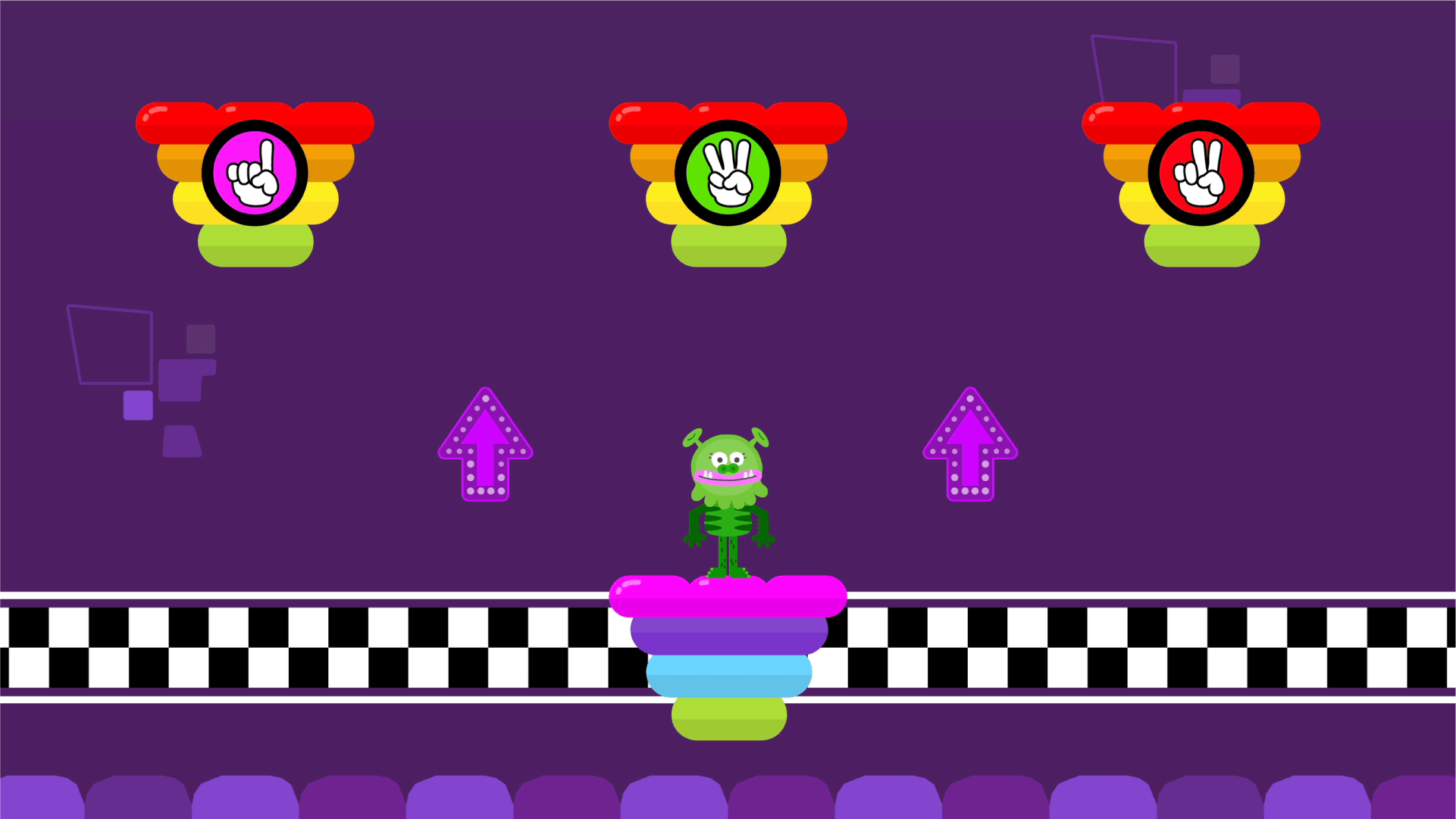
Expert Tips for Parents and Educators
Engage in Playful Learning. Integrating subitising into games and playful activities. As Bernie Westacott suggests, "Make learning a joyful and engaging experience."
Connect with Real-life Examples. Applying subitising to everyday situations to help children understand the relevance of math in their daily lives.
Foster Collaborative Learning. Group activities encourage children to learn from and with each other, enhancing their social and cognitive skills.
Subitising is such an important step to a deeper understanding and appreciation of numbers in the young mind and it doesn’t take much to start embedding subitising in children's daily activities and play. We hope these tips help!



























